Back in September, Pole Bicycles loudly and publicly ditched their carbon frame project, explaining at length why they thought carbon fibre production was unethical and environmentally unsustainable. In short, it was that carbon fibre isn’t readily recyclable, and when they asked producers in China what they do with waste material, they responded “We dump it in the sea”. In ditching carbon fibre, Pole also promised they were working on a new research project with aluminium, and would have something to show soon. Just two months later, here it is:
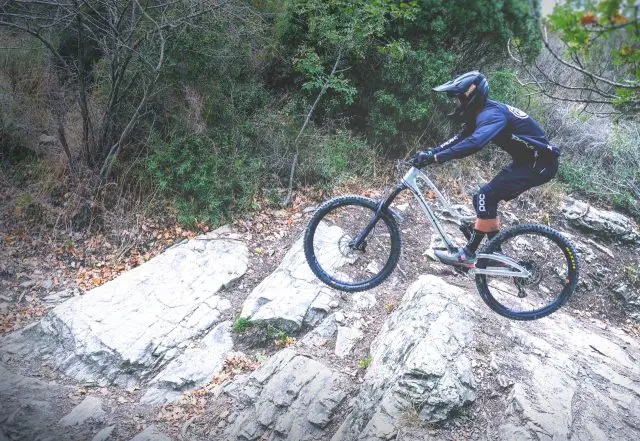
It’s called MACHINE, and is a prototype aluminium 29er Pole Evolink bike with a whopping 180mm of travel up front and 160mm rear, but here’s the thing: The frame is 100% CNC machined, in Finland no less. The CNC milled parts are bonded together. Doing this will allow Pole to precisely control tube thickness and weight, rather than having ballpark targets, minimising variation between frames. Machining everything also allows them to use different grades of aluminium, with this prototype made from 7075 T6.
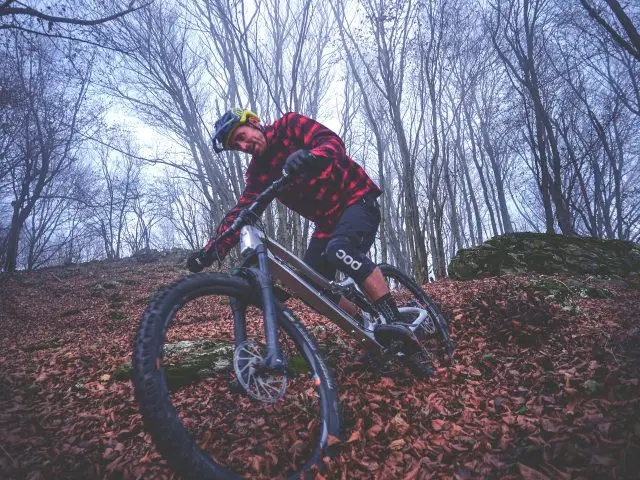
The shock is asymmetrically positioned to allow greater insertion length for the seat tube, accommodating longer dropper posts. The shock is also rotated ninety degrees, so as to get the piggyback chamber out the way and allow slightly lower standover. Pole say the frames will have external cable routing (though the prototype in these photos appears to have some internally routed sections), but with a port for stealth routed seatposts. The frame is so long they’ve managed to fit three bottle mounts on it, and the rear triangle also has clearance for 3 inch tyres.
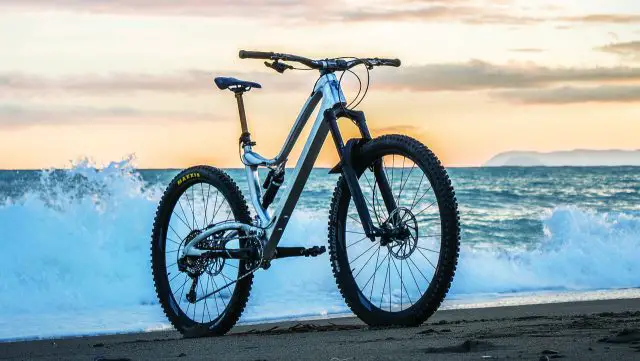
Initially at least it will only come in a raw finish, and by raw they mean raw: no lacquer or anything, with the intention that the frame surfaces will oxidise slightly and take on a patina over time. Preorders open today. [EDIT] The preorder page is here, and you can read more about specs here. Framesets are €3450.00 and a complete build is €6950.00.
Here’s a video of the prototype in action, and you can read more about the bike from Pole below.
(No video? Follow this link).
From Pole: “There is a new Pole coming and it will redefine how a frame is manufactured, the frame will be robotically CNC machined. A presale campaign will start on Black Friday 24.11.2017. The new frame will be called MACHINE and will be 100% made in Finland. The machining time is confidential but we can confidently say that we will mass produce the frames early next year onward from our secret factory in Finland. We will bond the frame pieces together in Jyväskylä and quality control the process under our very own roof.
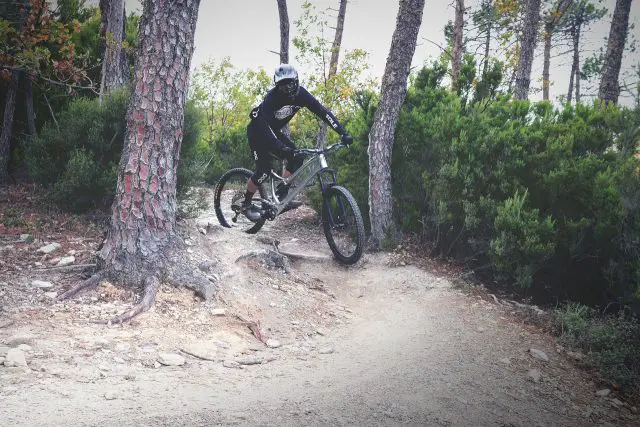
“The Machine is a cutting edge 29” superbike which can be used as the one bike for everything. The travel on the bike is 180mm front and 160mm rear. The frame geometry follows Pole’s notoriously long and slack geometry with steep seat tube for better climbing. On our tests, the Machine was even easier to ride than the EVOLINK’s.
“The MACHINE is 100% a Pole design just like our other frames. The head of design, Leo Kokkonen (Who is also the inventor behind Huck Norris) is responsible for the engineering and design, from the kinematics to the last slice of machining. The prototype frame and links are machined from 7075 T6 billets with titanium axles. The front and the rear triangles are made of three parts that are bonded together with glue, similar methods are being used in car and airplane industries.
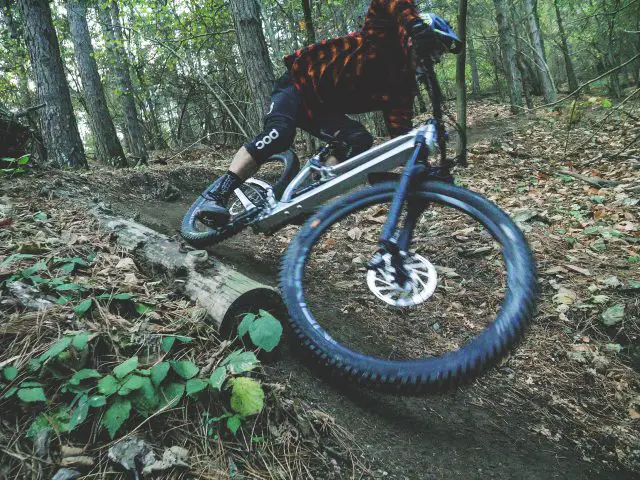
“7075 T6 aluminium is 1,7 times stronger than conventional bike alloy 6061 T6. This makes it possible to manufacture the frame to be much lighter than normal aluminium bikes. Machining from high-quality billets that are also used in the aerospace industry means a superior material is used. The heat treatment is also more consistent than heat treating the frames in an oven.
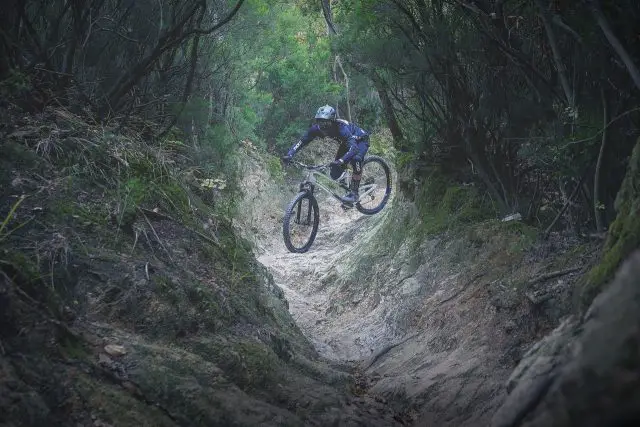
“With the machining processes, we can control the wall thickness where ever we want, instead of having a “ballpark” thickness like with hydroforming. If we compare the process to carbon, it’s faster, cleaner and we think it’s a more humane way of making bikes. Also, we can be sure how much stiffness we have in each place instead of having rough calculations and assumptions as it is with carbon. Our bikes are safe to use and you can actually see the possible frame damage with the naked eye. When it comes to carbon frames, you need to ultrasound the frame if you want to be sure it’s OK.
“From a solid block of tool aluminium, machined into a superbike that is the ultimate expression of mountain biking. The excitement, the speed, the most striking experience as a rider.
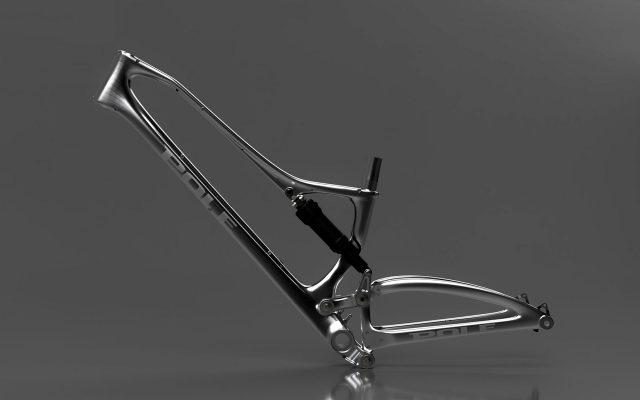
“Most bike frames need paint because the production finishing is not very appealing. The machined frame is left as it is to reveal the exclusive process. The best feature of this is that the frame is not prone to scratches and wear. The 7075 surface is hard and the machined surface camouflages the possibility scratches and wear. The oxidation process of the frame over time will produce a classy patine. Rather than having a worn out bike you will have a machine with charisma. We may introduce colours in the future but the raw finish is what we really like at the moment.
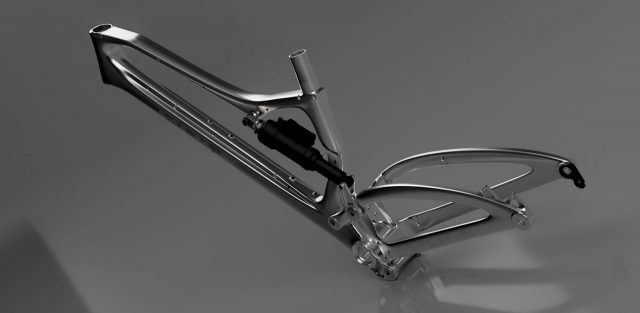
Comments (1)
Leave Reply
Post Comment
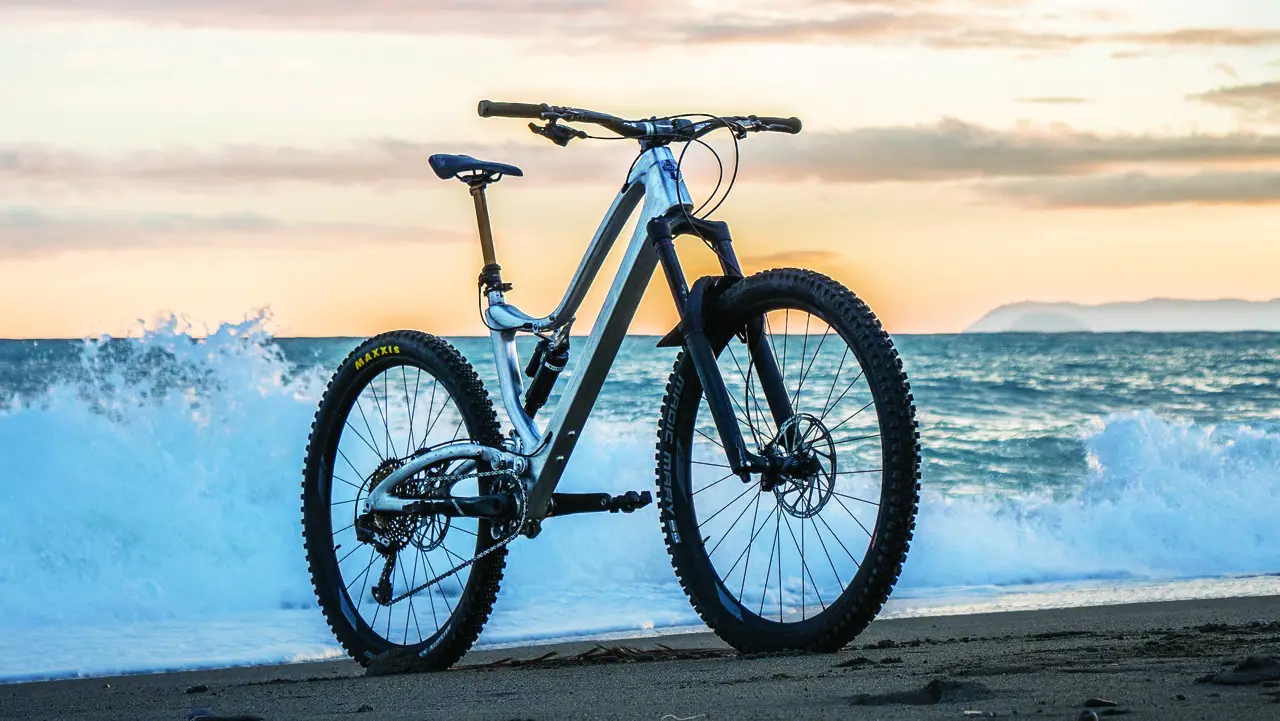
is that an external dropper?